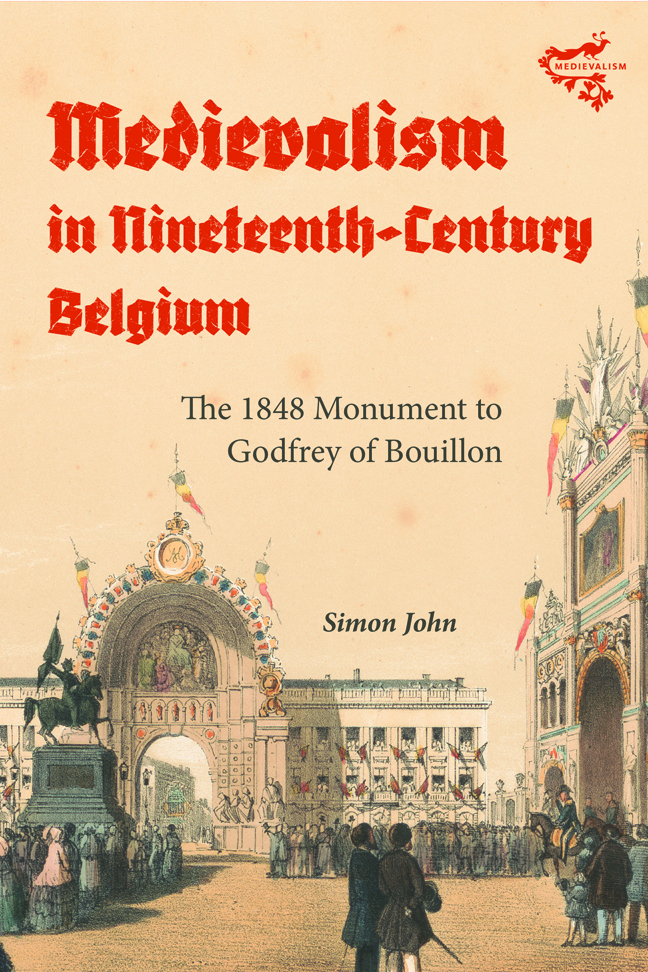Book contents
- Frontmatter
- Contents
- List of Illustrations
- Acknowledgments
- A note on language and names
- List of Abbreviations
- Preface
- Introduction
- 1 State-building, historical culture and public monuments in nineteenth-century Belgium
- 2 The physical setting of the monument: Brussels’ Place Royale
- 3 The creation of the monument
- 4 The changing meanings of the monument
- 5 The monument as a lieu de mémoire I: culture and politics
- 6 The monument as a lieu de mémoire II: history and national identity
- Conclusion
- Bibliography
- Index
- Medievalism
6 - The monument as a lieu de mémoire II: history and national identity
Published online by Cambridge University Press: 09 January 2024
- Frontmatter
- Contents
- List of Illustrations
- Acknowledgments
- A note on language and names
- List of Abbreviations
- Preface
- Introduction
- 1 State-building, historical culture and public monuments in nineteenth-century Belgium
- 2 The physical setting of the monument: Brussels’ Place Royale
- 3 The creation of the monument
- 4 The changing meanings of the monument
- 5 The monument as a lieu de mémoire I: culture and politics
- 6 The monument as a lieu de mémoire II: history and national identity
- Conclusion
- Bibliography
- Index
- Medievalism
Summary
Let us pause for a moment in the Place Royale to considerâ¦the equestrian statue of Godfrey of Bouillon by M. Eug[ène] Simonisâ¦We have all learned, while we were still young, to venerate the glorious name of our illustrious compatriot, the duke of Lotharingia, the king of Jerusalem, Godfrey of Bouillon; and the report of his high deeds, of his virtues and of his genius, wholly capture the whole period of the moral and political life of our ancestors, who were charmed from their youth during eve-nings so full of memories [of Godfrey] around the fireplace.
Josse Cels, writing soon after the inauguration of Brussels’ Godfrey of Bouillon monument in 1848, on the importance of the memory of the crusader in Belgium.
This chapter explores how Brussels’ 1848 monument to Godfrey of Bouillon functioned as a lieu de mémoire of ideas about Belgian history and nationhood between its inauguration and the early twentieth century. From 1848, the monument had a considerable influence upon works of literature, painting and sculpture produced in Belgium. By channelling and in turn amplifying interest in this medieval figure, the monument acted as a powerful national symbol, embodying ideas about the nation and its history to Belgians and foreigners alike. It had a discernible impact upon broader traditions linked to Godfrey of Bouillon, inspiring writers and artists to invoke it in their work. It also shaped responses to other monuments that were unveiled in Belgium, including several statues to other medieval figures, but also monuments that had no direct connection to the Middle Ages. In this way, it reinforced the teleological narrative of Belgian history that all these monuments were created to uphold.
The monument conditioned perceptions of Godfrey of Bouillon as a Belgian national hero, both within the nation and beyond its borders. It energised the wider network of traditions and impulses that surrounded the crusader's memory in this era, as part of which it connected to other lieux de mémoire devoted to him else-where in Belgium as well as in Jerusalem. In doing so, it transmitted ideas about Belgium in the surrounding nations, including the German states, Britain and France. Indeed, the monument directly inspired plans that emerged in the French town of Boulogne after 1848 to create a monument of its own to Godfrey of Bouillon.
- Type
- Chapter
- Information
- Medievalism in Nineteenth-Century BelgiumThe 1848 Monument to Godfrey of Bouillon, pp. 157 - 186Publisher: Boydell & BrewerPrint publication year: 2023



